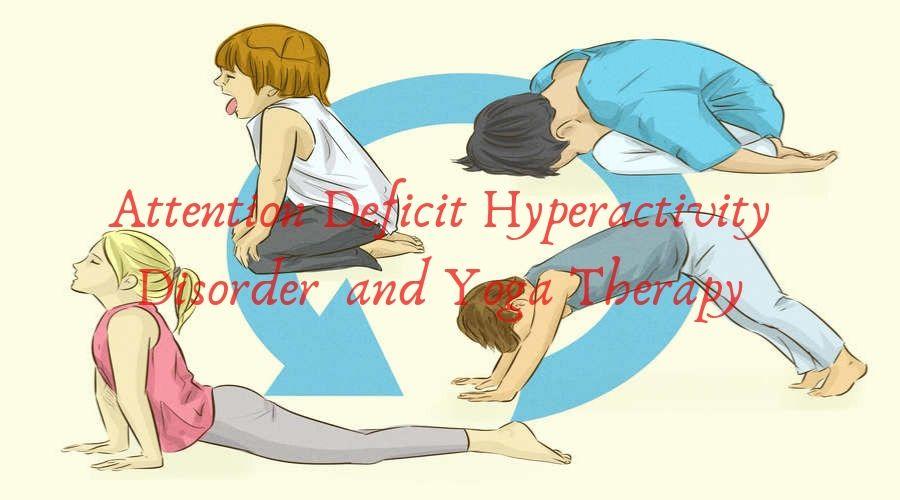Attention deficit hyperactivity disorder (ADHD) is more common in children than in adults. Approximately 6- 7% of the children and adolescents are affected by ADHD and it is normally diagnosed as neurodevelopmental disorders. Its symptoms are inattention, excessive motor activity, and impulsiveness. Various types of medicines with drugs are used as a treatment of ADHD. However, yoga is one of the most effective methods to treat ADHD through its root level. Yoga enhances concentration and attention span during the study.
Asanas (Postures)
Yoga-asana helps the brain and entire nervous system function well. Asanas give exercise to the body and brain. It can give very good effects to harmonize the neurodevelopmental process. Yoga is also regarded as complementary medicine for ADHD. In fact, all the asanas play different roles to avoid ADHD, but the following asanas are very good to cure this problem.
Yoga Poses To Cure Attention Deficit Hyperactivity Disorder
1. Tadasana (Palm Tree Pose):
Stand straight, feet parallel to each other with a distance of about 3 inches. Inhaling lift your hands up from the side of the ears. Lift up heels. Tighten (specially hips) and stretch the entire body. Try to increase your height. Be aware of different types of stretch. Hold this position minimum for 5 deep breaths.
2. Simhasana (Roaring Lion Pose):
Sit in Vajrsana (kneeling on the floor, bottom resting heels and calves). Keep knees about one foot apart. Place hands on the knees and sit up straight. Inhale long through a nostril and ROAR like a lion opening the mouth and the tongue extending as far out and down as possible. Do it five times. Feel the effects during the roar and after roar.
3. Parvatasana (Mountain Pose):
Stand up straight with feet three inches apart (with the level of hips). Straighten hands and spread the fingers downwards. Straighten the legs and spread toes without a knee lock. Stretch the whole body while grounding down by pushing through the feet and lifting through the head, face forward, maintaining your head level. Feel your body more and more. Hold the position for about 10 deeper breaths.
4. Balasana (Child’s Pose):
Sit down on Vajrasana with the knees separated. Bend forward to place the forehead on the ground in front of the knees with arms can extend forward or placed back. Relax here for about five to ten deep breaths.
Besides, sun salutation and moon salutations are also very important for people with ADHD. Along with yoga, they should practice different types of creative works, creative games, art, drawings, etc. It would be the best idea if they practice mindfulness in different types of daily activities.
Breath Control
Breath control can help feel more in control of brains and bodies, which is huge for people with ADHD. Taking nice deep breaths helps to receive the extra oxygen gives our bodies a kick in the backside. Longer breaths give a sense of well-being, anxiety reduction, increased energy levels (the good kind) and decreased irritability.
Practice Breath Control
Take ten slow, deep breaths with the nose remaining conscious. After that, observe natural breaths. You can do it for about 10 minutes.
Mindful Exercises And Other Activities
Mindfulness is a process of maintaining complete concentration and awareness to the present experience on a moment-to-moment basis, without a reaction, without a judgmental attitude, but rather attentive and curious maintaining a perfect equanimity. The practice of concentration, mindfulness, and meditation is an awareness exercise to build attention control and inhibitory skills. It includes many things mind-body therapy, biofeedback, deep breathing, guided imagery, progressive relaxation, hypnotherapy, and yoga. Besides, conscious eating, conscious walking, conscious moving, conscious exercise, conscious washing, conscious bathing, conscious working, etc. are also practiced. Mindfulness can change brain activation patterns, enhances mood, decrease anxiety and stress, give relief from pain and ameliorate immunity.
Mindful practices can be done at any time and anywhere. Mindfulness is a learned skill which is counterintuitive with positive effects on ADHD symptoms since theta to beta ratios are typically increased in ADHD, and mindfulness further increases theta wave activity. Yet, meditation and mindfulness improve ADHD not because of the quantity of brainwave function, but because of the learned aptitude to master attention and focus to a specific target or activity. (i.e. The breath; and different feelings of the body and mind).
Since children are mostly affected by ADHD, parent who learns mindfulness through yoga or meditation can help their children. Parents may improve methods of disciplining and responding to a child’s behavior because they can understand their children easily. Thus, a child may learn from the parent how to transform their attitude and habit pattern positively. It is far better-having parents involved in the mindful practices regularly since the children get a better opportunity to continue and progress in the mindful practice at home rather than confining the practice in the sessions.
